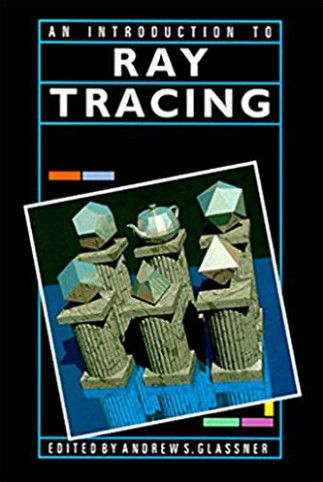Short version: the first book on ray tracing, An Introduction to Ray Tracing, from 1989, is now free to download. You can get the PDF or DJVU version. Note that the PDF has been updated with one erratum fix (so far), and currently is at version 1.1.
Longer version: with Pete Shirley releasing for free his three introductory mini-books on ray tracing this summer, then Matt Pharr releasing the book Physically Based Rendering for free, I asked Andrew Glassner if he could get the rights to release the classic An Introduction to Ray Tracing. He was game, clearing it with the authors, tracing down the right person at Elsevier to ask, going through the paperwork, and – freed! He just wrote me:
I’ve just now received the countersigned rights release for An Introduction to Ray Tracing. I guess the contract was in my name, because I now own the rights! I hereby grant you permission to publicly share the aforementioned book, or the manuscript thereof, or an electronified version of the manuscript thereof, electrically encoded and presented using one or more typefaces of human design, upon a website for the general reading pleasure of the general reading public. Go for it!
So going for it I am. Enjoy! Yes, it’s ancient. But, surprisingly, it’s still a fine introduction in a bunch of ways – math doesn’t rot, and many of the bits from back then are still used today – stochastic sampling, bounding volumes, adaptive supersampling, etc. (Matt Pharr agrees). Andrew’s page about the book (and some history about the cover) is here.
Me, I expect this will cut into my yearly royalties – I earned $6.22 last year on the book – but, ah, the giant sacrifices I make for The Greater Good, and so humble, too. If you consider free books a travesty, you can always buy a copy off this insane page on Amazon – a steal (on someone’s part) at $588.23. The normal Amazon book page is not so bonkers.
Update: Andrew was asked what sort of license the book is under. We discussed it and he chose the Attribution 4.0 International (CC BY 4.0) license, the most liberal of the CC licenses. To quote the main bits:
You are free to:
- Share — copy and redistribute the material in any medium or format
- Adapt — remix, transform, and build upon the material for any purpose, even commercially.
Under the following terms:
- Attribution — You must give appropriate credit, provide a link to the license, and indicate if changes were made. You may do so in any reasonable manner, but not in any way that suggests the licensor endorses you or your use
- No additional restrictions — You may not apply legal terms or technological measures that legally restrict others from doing anything the license permits.
Do see the whole license page for further details.

If by some miracle you use the first printing of the book, I’ve made an errata page. All these errors are fixed in the PDF and DJVU versions, except as noted.